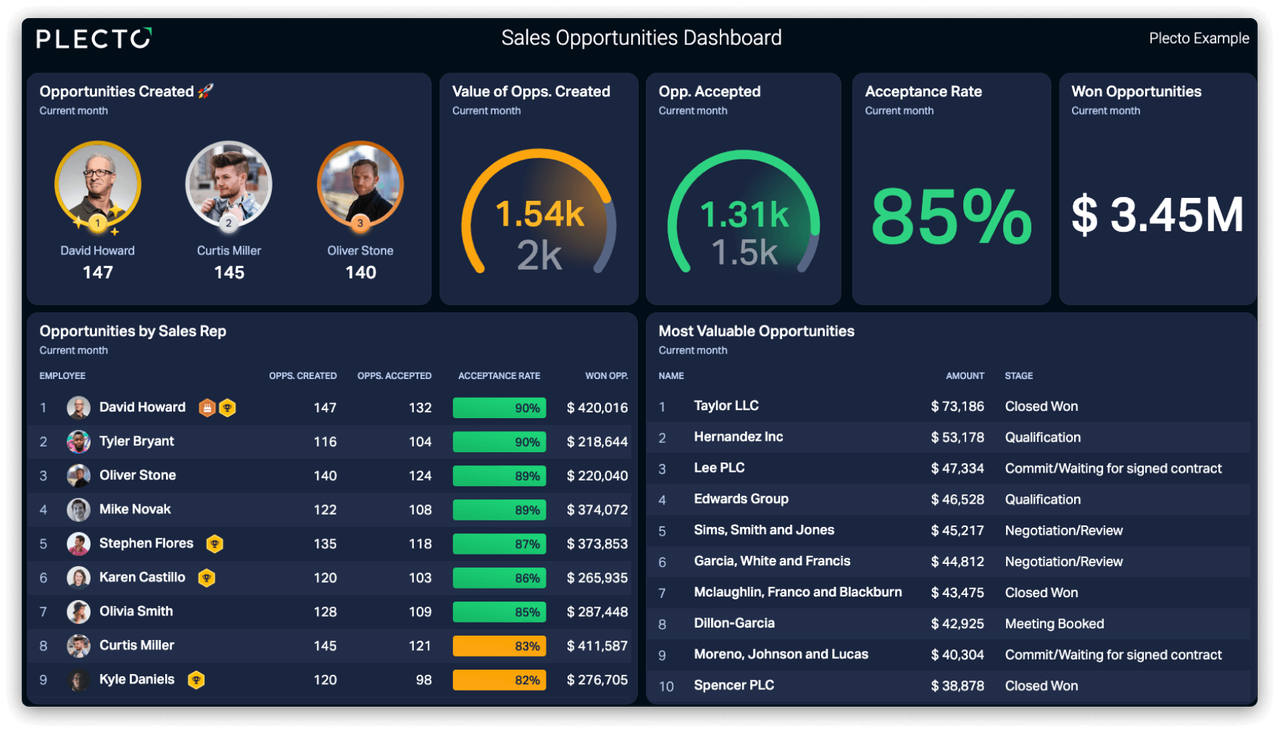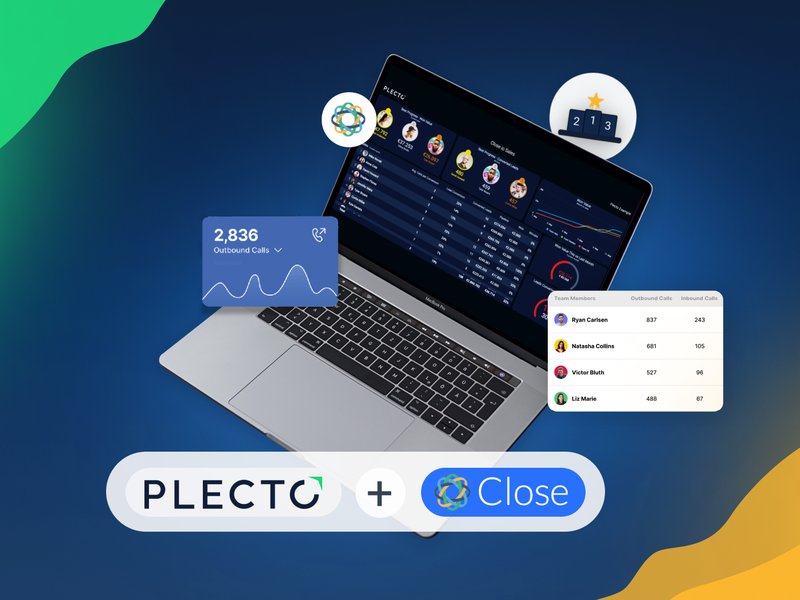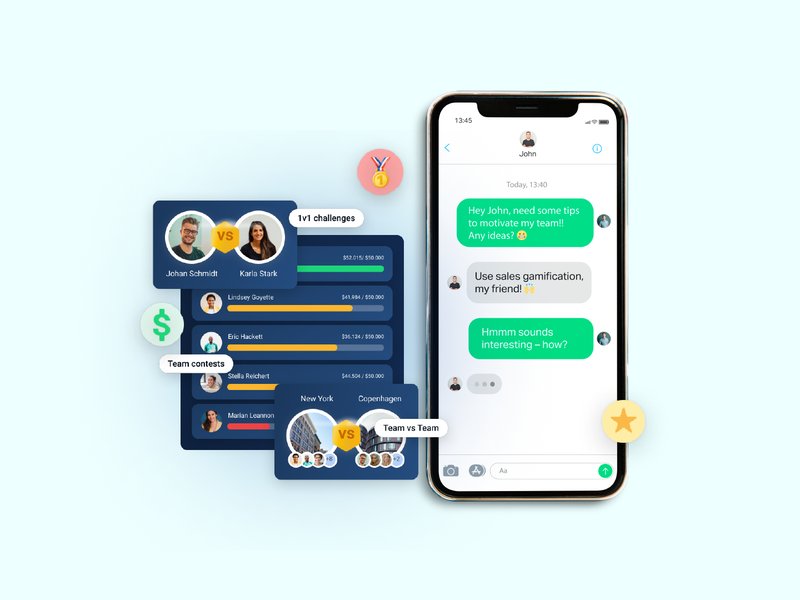Have you ever heard marketers or salespeople talk about leads, prospects, and opportunities and wondered if they all meant the same thing? Well, a lead is not the same as a prospect, and an opportunity is not the same as either of them. In this blog post, we will dive into all definitions, and characteristics and explain what lead vs. prospect vs. opportunity are. So let's get started!
Lead vs prospect vs opportunity in the B2B sales process. What is the difference?
Lead, prospect, and opportunity are all elements of the B2B sales process. This procedure is carried out sequentially:
- Step 1: Marketing efforts attract new leads.
- Step 2: Qualified leads are becoming prospects.
- Step 3: Salespeople identify qualified prospects as opportunities.
- Step 4: The sales process finishes with a possible sale.
Importance of understanding the difference between lead vs prospect vs opportunity
Understanding what is meant by lead vs prospect vs opportunity is critical to the success of your marketing and sales strategies. If you treat a lead as a prospect, for example, you will be wasting your time and resources on someone who is not yet ready to buy. From another angle, if you treat the opportunity as a lead, you may miss out on a ready-to-buy potential customer.
Understanding the differences between these three terms allows you to tailor your approach to each type of customer and significantly increase your chances of converting them into actual customers. Furthermore, it will optimize your marketing and sales strategies, resulting in business growth.
What is a lead?
A lead is a customer who has expressed an interest in your product or service. Leads typically respond directly to promotional activities such as providing contact information on the website or contacting the company directly. It is important to mention, that not all leads are valuable for your business. Also, the lead is not yet ready to buy and will require additional information before becoming a customer.
The art of attracting customers to your brand is known as lead generation. Inbound marketing strategies, such as digital content creation, can attract leads like a magnet in lead generation. Consider blogs, social media posts, and e-books that provide solutions to common problems. Engaging content can benefit both you and your potential customers. You can encourage customers to share their contact information with you by providing valuable content.
That is not the only method for generating leads! Cold calling and e-mail marketing are examples of outbound sales tactics that can be used to reach potential customers who may not have discovered your brand through other channels.
Overall, generating leads is a crucial step in the sales and marketing process. By understanding the characteristics of a lead and utilizing effective lead-generation methods, you can build a strong pipeline of potential customers who are more likely to convert into loyal customers!
Build your first dashboard.
Start your 14-day free trial today
What is a prospect?
Now that we understand what leads are, let's explore prospects. A prospect is a person who demonstrates higher interest in your product or service than a lead, and who has a greater likelihood of making a purchase.
The difference between a prospect and a lead is clear, and prospects show key characteristics that set them apart from leads. Prospects have identified a problem and developed its specifications. They may fit your ideal customer profile, such as having a particular budget or deadline.
Perhaps you are unsure of how to identify business prospects. One method is to monitor their activity on your website and social media platforms. Determine where they spend the majority of their time and what content they are most interested in. It is the initial indication that a person may become a prospect and should therefore be prioritized in your lead management process.
Another prospect option can be counted in lead scoring. It entails giving each lead a score based on their level of engagement with your brand. Lead scoring can include a variety of metrics, such as:
- Business demographics: companies can collect information about prospects' job titles, company size, and industry.
- Online behavior: quantitative data identifying website visits, page views, email open rates, and downloaded resources.
- Levels of engagement: gathering information on how potential customers interact with your company Is the company, for example, requesting a demo, attending a webinar, or contacting the sales team?
- Specific business information: collect information about the company’s revenue, its location, and the number of employees.
- Lead source: determining how the prospect was acquired, whether through a referral, social media, or SEO.
By identifying those elements, you can direct your sales and marketing efforts toward those who are more likely to convert into paying customers. Understanding the characteristics of the prospect and collecting the appropriate metrics will allow you to determine which prospects are likely to become customers shortly.
What is an opportunity?
The opportunity stage is critical in the sales process. This frequently leads to the final stage of closing the deal, and it can provide indicators of the likelihood of a successful sale. After the lead generation and prospecting stages, an opportunity represents a potential sale. It is a qualified lead who has expressed interest in your product and has the authority to make a purchase decision, increasing the likelihood of a successful deal closing.
So, how do you define an opportunity? It should include elements from your ideal customer profile, such as demographics and industry, and explain what kind of value the customer will receive from your company. In addition, an opportunity should have a clear decision-making timeline and a budget that matches the value you are offering. If the customer requests a proposal, expresses interest in a demo, or engages in price negotiations, these can be indicators of an opportunity.

Differences between Lead vs Prospect vs Opportunity
Lead vs Prospect
So, to summarize, here’s a quick overview of the main differences between prospect and lead:
Lead:
- It is the top of the sales funnel and the first stage in the B2B sales process.
- Marketing campaigns are used to generate leads.
- Ideally, a large number of leads are generated. However, not all of them will be equally valuable.
- The customer is simply expressing an interest in your product or service.
- Leads typically do not communicate with your sales team; it is one-way communication.
Prospect:
- Prospecting follows successful lead qualification, which results in a prospect-qualified lead.
- Prospects engage in two-way communication with sales representatives.
- Prospects are moving up the sales funnel by attending product demos, for example.
- The number of prospects is significantly lower than the number of leads.
However, understanding the key differences between prospect and lead isn't enough; it's also important to distinguish between lead and opportunity. So, here's how an opportunity differs from a lead:
- An opportunity has already been identified as a qualified lead ready to make a purchase decision.
- Sales reps have already built relationships with prospects and identified their needs and requirements.
- An opportunity increases the likelihood of a sale closing.
In conclusion, understanding what is meant by lead vs prospect vs opportunity is vital for the B2B sales process. The B2B sales journey starts with leads, which are the first glance. Prospects are the ones who have caught your attention and engaged in meaningful conversations with your sales team. However, the real prize is opportunities, which are ready to make a purchase. So, don’t focus only on generating leads, aim to nurture them into prospects and opportunities!

Supercharge your sales pipeline with Plecto!
Plecto dashboards make it simple to track and analyze your leads, prospects, and opportunities, providing you with valuable insights. Centralize your CRM data into a single powerful Plecto KPI dashboard, allowing for data-driven decisions! Your sales team is the foundation of your company's success. They are more than just workers; they are your A-Team and secret weapon. So invest in them by incorporating gamification and competition into your workplace! Your sales team will strive to outperform and work more efficiently than ever before with interactive widgets and notifications. There can be no successful competition without incentives to increase sales motivation and create more golden opportunities. The Plecto Reward Store is based on a coin system, and rewards can be customized to fit your team and foster a competitive atmosphere!
Start nurturing your sales now!
Take advantage of a 14-day free trial to unlock your full sales potential right now!




